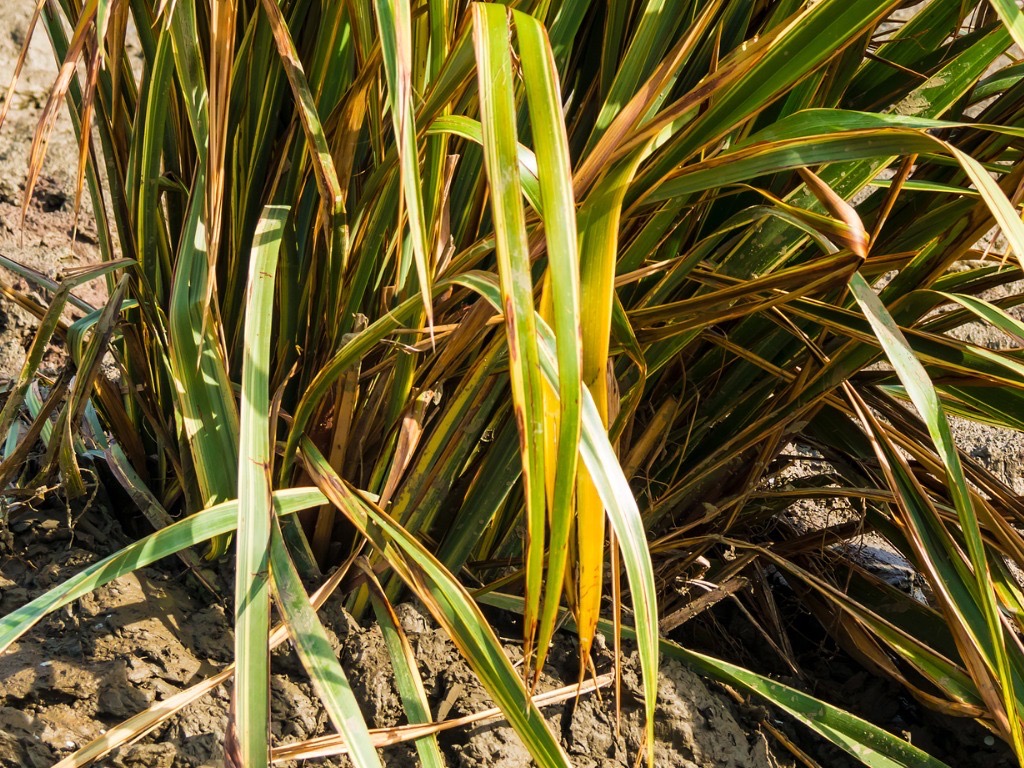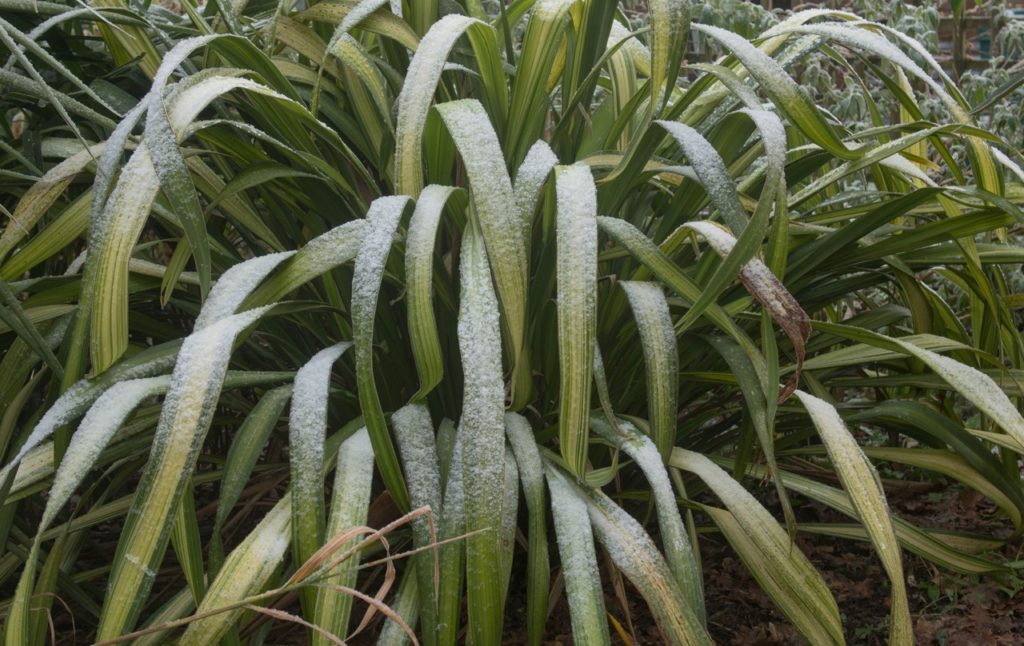Phormiums Can Thrive When Grown In Pots – Experts Recommend These Conditions

PERENNIALS > PHORMIUM > CONTAINERS

Elizabeth is a Permaculture Garden Designer, Sustainability Consultant and Professional Writer, working as an advocate for positive change. She graduated from the University of St. Andrews with an MA in English and Philosophy and obtained a Diploma in Applied Permaculture Design from the Permaculture Association.
Reviewed By COLIN SKELLY

Colin is a Horticulturist and Horticultural Consultant with experience in a range of practical and managerial roles across heritage, commercial and public horticulture. He holds the Royal Horticultural Society’s Master of Horticulture award and has a particular interest in horticultural ecology and naturalistic planting for habitat and climate resilience.
IN THIS GUIDE
PHORMIUM GUIDES
Common Problems
Container Growing
Division
Pruning
Phormiums are a couple of species of grass-like plants native to New Zealand.
They are sometimes also known as New Zealand Flax, because, though we tend to think of them as only ornamental plants, they were used for textiles by Maori people and by early settlers in their native range.1Hindmarsh, G. (2016, June 23). Flax – the enduring fibre. New Zealand Geographic. Retrieved March 22, 2023, from https://www.nzgeo.com/stories/flax-the-enduring-fibre/
Phormium tenax, Phormium colensoi and cultivars derived from these two species are now widely grown as garden plants in the UK and other temperate regions around the world.
“I would typically choose Phormium colensoi for pots or containers, as the species and its cultivars are typically smaller than Phormium tenax,” says Horticultural Consultant Colin Skelly.
“Whilst P. tenax can be used, it will need dividing to keep it manageable in anything other than the largest pot or container.”
The leaves, which arch downwards, are shaped like swords and are often variegated, or tinged with different shades and come in a wide range of colours.
These plants are drought tolerant once established and can be largely trouble-free when grown in a suitable spot.
Can You Grow Phormium In Pots?
The good news is that phormium can be grown in containers – this is a popular choice and one that makes a lot of sense.
Phormiums like free-draining conditions so they can thrive in pots, which drain more freely than many soils.

However, when choosing a phormium to grow in a container, it is important to understand that some phormiums are much more vigorous, and grow much larger than others.
Some can tower to over 2m tall and are not as well suited to container growing.
If growing phormiums in pots, you are best to opt for options which are more compact.
Fortunately, there are many dwarf phormiums, or more compact choices, which are ideally suited to container growing and grow to around 1m or less in height.
Container Choices
When choosing a container, remember that even dwarf phormiums or more compact options are relatively large plants.
You are looking for a larger container that can accommodate your plant.
A mature compact phormium (growing to no more than 1.5m tall) will usually need a container at least 50cm across and at least the same depth.
Larger specimens will, of course, need even larger containers.

It is also important to consider the height of the specimen, and to choose a container heavy enough not to topple over in the wind with the weight of the plant.
Terracotta pots can be a good choice because they are weighty enough to deal with these plants.
Terracotta is also a good choice because phormiums like free-draining conditions, and they tend not to hold on to water as much as plastic ones or ones made from other materials.
It is also vital to ensure that your container has good drainage holes at the bottom and will allow excess water to drain away.
Compost Requirements
According to the RHS, Phormiums will grow best in peat-free compost with added John Innes.
They recommend adding 10% of perlite or fine grit by volume to this potting mix to improve the drainage.

Of course, you might also create your own loam or soil-based mix to keep your phormium plants happy.
The key is to ensure that you meet the plant’s nutritional needs while also ensuring good drainage to prevent waterlogging.
Potting Up Phormium
Phormium is available to buy year-round, but the best time to plant up a new specimen in a container is in the spring – after the risk of a hard frost has passed where you live.
It is a good idea to plant up your phormium in spring because this gives it a chance to establish over the summer months before the colder and wetter weather of autumn and winter arrives.
How Many Can You Plant Per Pot?
These plants are best given a pot on their own.

Plant one phormium in a pot, making sure that the pot you choose accommodates the root ball of the plant you purchase, with at least 5cm of the growing medium around each side so that the plant has room to grow.
Potted Phormium Care
Light Requirements
Place containers in a sunny or partially shaded spot.
Most phormiums typically do best in full sun, and some will have more vibrant colouration in full sun conditions, but most can also cope with some shade.
Watering
Water regularly over the summer months during dry periods during the first year after planting.

Phormiums growing in the ground will be fairly drought tolerant after this initial year, but those growing in containers can suffer drought damage, and you should continue to water regularly in dry weather over the summer months.
However, take care not to overwater by watering only when the top few centimetres of the growing medium feel dry – and always make sure that excess water can easily drain from the bottom of the pot.
Feeding
It is a good idea to feed container-grown phormiums from late spring through to the middle of the summer.
They will appreciate compost tea, or seaweed feed to replenish nutrients, though phormiums growing in the ground typically don’t need additional fertiliser other than a mulch each spring.
Overwintering
Phormiums are not fully hardy in colder parts of the UK.
In many areas, you will need to take steps to protect your plants in winter from cold and frosts.

You should lag the container to protect the roots, and make sure containers are placed in a sheltered spot.
In colder regions, you may also need to wrap the leaves with fleece or other fabric to protect the foliage if a harder frost is forecast.
Pruning & Dividing
In spring, remove any old, damaged leaves by pulling or cutting them off as close to the base as you can.
If clumps have become too large for their container, consider dividing the mature plant and repotting each of the sections.
This avoids congestion and gives you new plants to give away or to expand your container garden.
References
- 1Hindmarsh, G. (2016, June 23). Flax – the enduring fibre. New Zealand Geographic. Retrieved March 22, 2023, from https://www.nzgeo.com/stories/flax-the-enduring-fibre/
